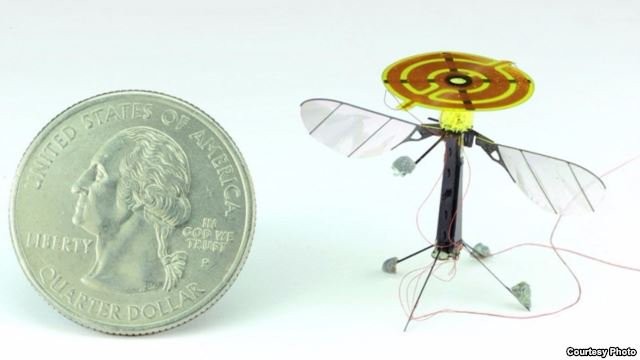Researchers at Harvard have developed what is considered to be the world's smallest drone, which is hoped to be used for a variety of applications.
Dubbed the "RoboBee," the drone is just a measly two centimeters in height. However, when it is connected to a power source, the minuscule robot is able to flap its transparent wings around 120 times per second to generate lift, the China Daily reported.
RoboBee's flight capabilities allow it to fly as good as real bees. It can also hover and perch under a leaf. The drone can also be made to "swim" in water by using its wings as oars.
The project, which began development in 2008, was initiated by Harvard's microrobotics lab and was originally intended to create a colony of robotic bees to study the effects of the Colony Collapse Disorder that was affecting thousands of colonies around the United States that tune.
To create the small robots needed for the study, the team had to first develop new miniaturized ships and autonomous platforms. For that, the researchers received a $10 million grant from the National Science Foundation.
To build the extremely tiny robot, the researchers used 3D printing technology and build the body from sheets of carbon fiber, ceramics, and plastic one layer at a time. The technique allowed the team to integrate the various electronic components within the main body itself, making it much lighter and simpler.
RoboBee also features an ingenious design that allows for specific areas of the printed body to fold out and create the final three-dimensional shape.
As the technique used to build RoboBee is similar to the one used to print circuit boards, experts believe that the technology can eventually be scaled up for mass production, Fast Co Design reported. This could open the door to a wide array of applications, both for the military and commercial users.
However, research team member Chen Yufeng said that there are still a lot more to be done before it can be made available. For one, they have yet to find or develop a suitable battery that will fit RoboBee's size. Chen added that they also need to know how they can mount additional sensors on the4 small package for it to do useful work.
However, Chen is optimistic that they will be able to make it available to companies once the technology has matured.



























